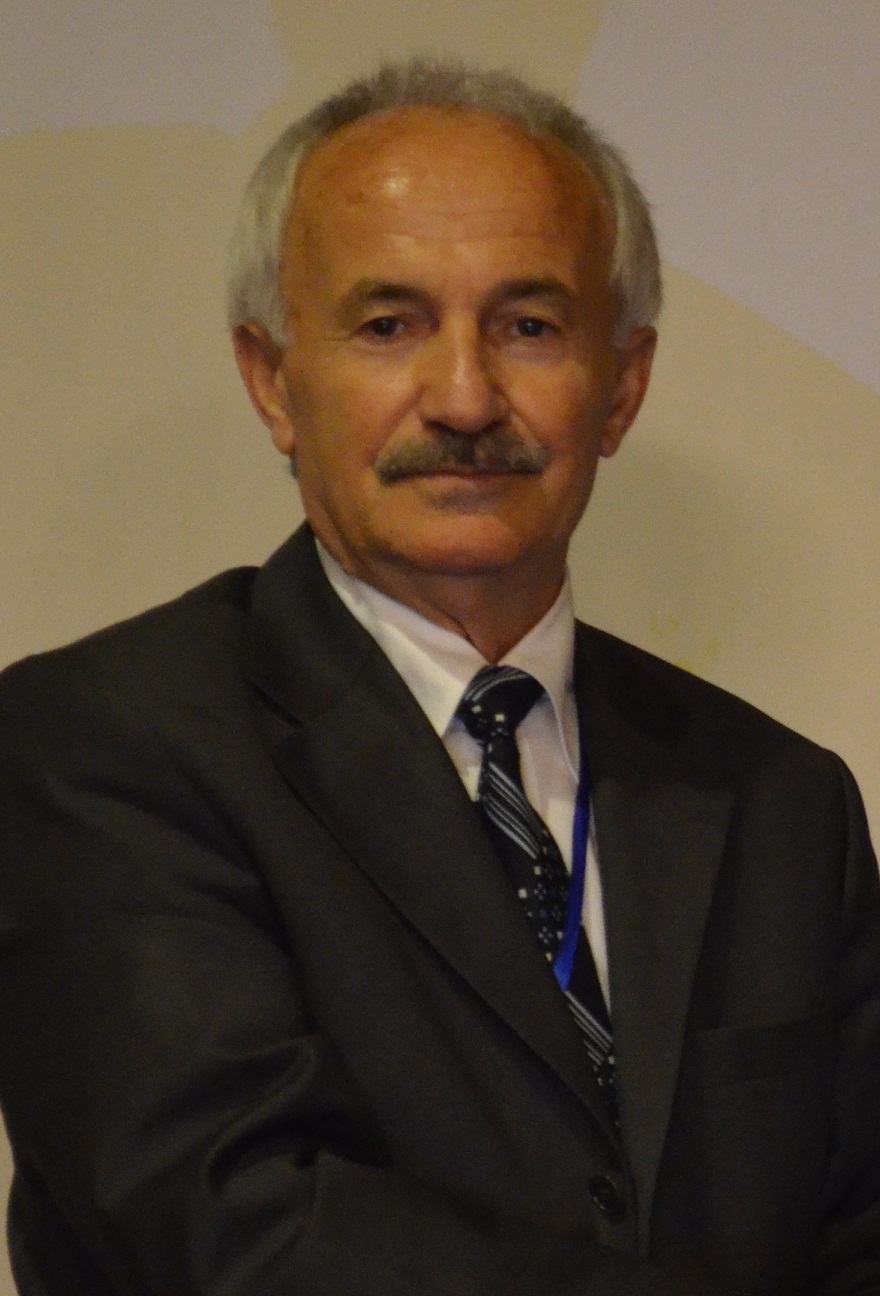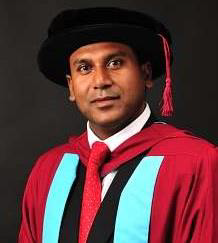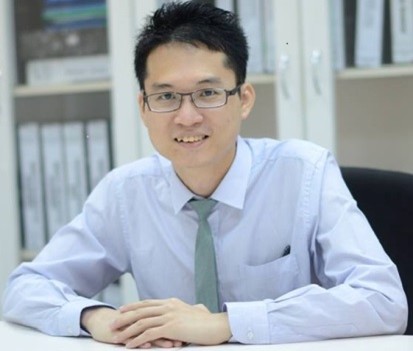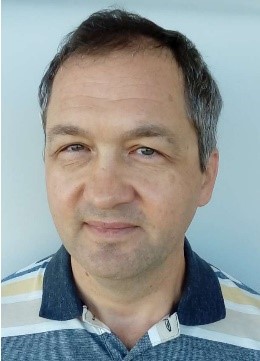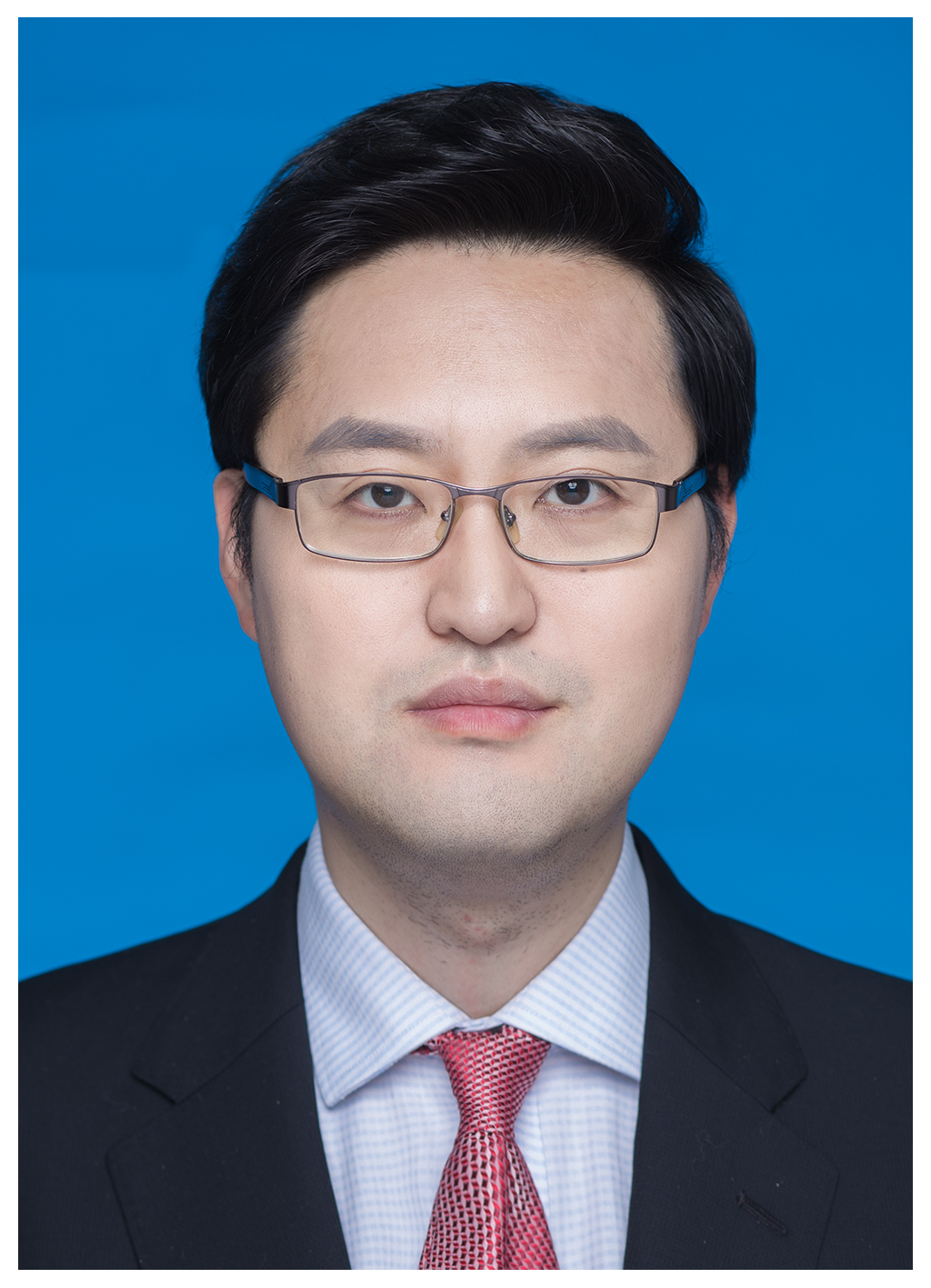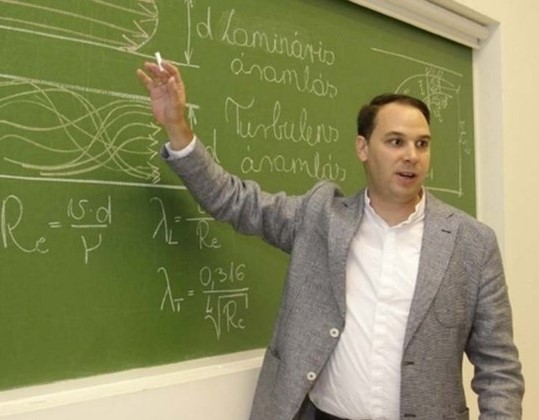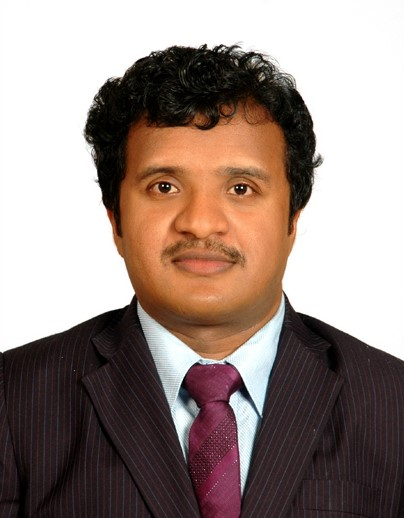Invited Speakers
Dr. Osman Adiguzel
Department of Physics, Firat University, TurkeySpeech Title: Thermomechanical Processes and Reactions in Thermal and Mechanical Memory in Shape Memory Alloys
Abstract: A series of alloy systems called shape memory alloys exhibit a peculiar property called shape memory effect. This phenomenon is initiated by thermomechanical processes on cooling and deformation and performed on heating and cooling. Therefore, this behavior can be called thermal memory or thermoelasticity. Strain energy is stored in the materials due to the plastic deformation and released on heating by recovering the original shape. These alloys exhibit another property, superelasticity, which is performed mechanically by stressing and releasing the material at a constant temperature at the parent phase region, and this behavior can be called mechanical memory. Superelasticity exhibits ordinary elastic material behavior, but it is performed in non-linear way; loading and unloading paths are different at the stress-strain diagram, and hysteresis loop reveals energy dissipation Thermoelasticity is governed by the thermal and stress induced martensitic transformations, and reverse austenitic transformation. Thermal induced martensitic transformation occurs on cooling with cooperative movement of atoms along with lattice twinning in <110 > -type directions on the {110}-type plane of austenite matrix, by means of lattice invariant shear, and ordered parent phase structures turn into twinned martensite structures. The twinned structures turn into detwinned martensite structure with deformation, by means of stress induced martensitic transformation. Detwinned structures also turn into ordered parent phase structure on heating, by means of reverse austenitic transformation. Superelasticity is governed by stress induced martensitic transformations by stressing and releasing materials and ordered parent phase structures turn into detwinned martensitic structure with stressing.
Copper based alloys exhibit this property in metastable beta-phase region, which has bcc-based structures at high temperature parent phase field. Lattice invariant shear and lattice twinning is not uniform in these alloys and cause the formation of complex layered structures, depending on the stacking sequences on the close-packed planes of the ordered lattice.
In the present contribution, x-ray and electron diffraction studies were carried out on two solution treated copper based CuZnAl and CuAlMn alloys. Electron and x-ray diffraction exhibit super lattice reflections. Specimens of these alloys were aged at room temperature, at which both alloys are in martensitic state. A series of x-ray diffractions were taken at different stages of aging in a long-term interval, and reached results are interpreted.
Keywords: Shape memory effect, Martensitic transformation, Thermal memory, Mechanical memory, Twinning and detwinning
Dr. Anca Mazare
Department of Materials Science – WW4-LKO,Friedrich-Alexander University of Erlangen Nurnberg, Germany
Speech Title: TiO2 Nanostructures by Electrochemical Anodization – Morphology and Biomedical Applications
Abstract: Nanostructuring of titanium is a well-established surface modification approach, resulting in ideal implant biomaterials, as it improves biocompatibility and corrosion resistance. Of the various surface modification techniques, electrochemical anodization is one of the most widely used, leading to self-organized TiO2 nanostructures (nanotubes, nanopores, mesoporous, etc.) [1-3]. The nanotopography of the nanotubular surface clearly influences their use e.g., in osseointegration, antibacterial activity, drug delivery, mitigation of the inflammatory response, etc. [2-6]. Cells react to such nanoscale dimensions and can be synergistically influenced by the nanostructures morphology (e.g. nanotube diameter) and/or by addition of growth factors [4-6]. We will further discuss the key parameters resulting into different nanotubular morphologies, and their effect on the resulting top surface morphology (initiation layer, open-top, nanograss, etc.). Next crucial aspects of anodic nanostructuring, tailored for biomedical applications will be shown. Finally, a synthetic overview of biomedical applications using such nanostructures [4-6] and their future prospects will be shown and discussed.
Keywords: Electrochemical anodization, TiO2 nanotubes, Biomedical applications
References
1. K. Lee; A. Mazare; P. Schmuki Chem. Rev. 2014, 114, 9385.
2. J. Park, A. Cimpean, A. B. Tesler, A. Mazare, Nanomaterials 2021, 11, 2359.
3. A. Mazare, ACS Appl. Mater. Interfaces 2022, 14, 13, 14837.
4. R. Ion, M.G. Necula, A. Mazare, V. Mitran, P. Neacsu, P. Schmuki, A. Cimpean, Current Medicinal Chemistry 2020, 20, 1.
5. A. Mazare, J. Park, S. Simons, S. Mohajernia, I. Hwang, J.E. Yoo, H. Schneider, M.J. Fischer, P. Schmuki, Acta Biomaterialia, 2019, 97, 681.
6. M.G. Necula, A. Mazare, A.M. Negrescu, V. Mitran, S. Ozkan, R. Trusca, J. Park, P. Schmuki, A. Cimpean, Int. J. Mol. Sci. 2022, 23, 3558.
Dr. Ricardo Castedo
Geological and Mining Department,Universidad Politécnica de Madrid, Spain
Speech Title: Slabs Reinforced with Fiber Reinforced Polymers under Closing Explosions: Experimental and Numerical Features
Abstract: Numerical simulation of reinforced concrete (RC) slabs with the addition of an external reinforced polymer (FRP) have been developed and compared with full scale real tests. Eight tests were conducted, one as a validation test (scaled distance equal to 0.83 m/kg1/3), three at a scaled distance of 0.42 m/kg1/3, and three at 0.21 m/kg1/3. The size of the slabs was 4.4 x 1.46 m, with a span of 4 m, and a thickness of 15 cm. The slabs were built using concrete of class C25/30, and B500C reinforcing steel. The surface receiving the blast was reinforced with 10 mm mesh spaced 300 mm apart in both directions. However, on the opposite face, the reinforcement used was 12 mm spaced 150 mm in both directions. Two different external reinforcement have been used: carbon fibre reinforcement (CFRP) and E-glass fibre reinforcement (GFRP). In cases of shorter scaled distances, one of the tests had no extra reinforcement, while the other two tests were performed with each of the FRPs located on the face opposite to the blast. Numerical simulation was performed with LS-DYNA software. The study elements (concrete, steel, and reinforcement) have been simulated in a Lagrangian formulation with solid elements, beam elements and shells, respectively. Two concrete models have been used and compared: CSCM and RHT. As for the explosive, the CONWEP-based Load Blast Enhanced (LBE) card was used as well as Smooth Particle Hydrodynamics (SPH) to check the explosive shape effect. Reinforcement with CFRP resulted in a generally reduced damage area on both surfaces. All models show a good correlation with the test results when comparing them with different parameters.
Keywords: LS-DYNA, Full-scale, Reinforced concrete, LBE, SPH
Acknowledgements: The Centre for Industrial Technological Development (CDTI) funded the PICAEX project, a consortium between TAPUSA, MAPEI and FHECOR, with the collaboration of the Universidad Politécnica de Madrid. The authors would like to thank the staff of “La Marañosa” (INTA) for their support in the trials.
Dr. Yanli Lu
Professor, School of Materials Science and Engineering, Northwestern Polytechnical University, ChinaSpeech Title: Study on the Interface Properties and Associated Void of the Nanoscale Al Precipitates in Al-Si Alloys
Abstract: The properties of the interface between nanoscale Al precipitate and Si matrix were studied by the first-principles calculations combined with high-resolution transmission electron microscopy (HRTEM) observation. The purpose of this work is to reveal its role on the mechanical properties of the eutectic Si particle in Al-Si alloys. Meanwhile, the formation mechanisms of the void associated with every Al precipitate were also discussed in depth. The calculation results show that the bonding of the Al/Si interface has strong covalent feature, which makes the interface stronger than the bulk Al and weaker than Si matrix. Therefore, the microcracks tend to form and expand in the interior of nanoscale Al precipitates instead of Al/Si interface. The nanoscale Al precipitates will improve the toughness of eutectic Si particles by releasing part of stress through lattice distortion and promote the formation of nano-deformation twins. In order to explain the interesting phenomenon that there is always a void associated with every Al particle, the diffusion barrier of Al atom in the Si matrix and the binding energy of solute atom and a vacancy were calculated. The results indicate that the vacancies can be introduced by the change of the volume and the migration of the solute-vacancy pair during the diffusion and precipitation progress. Then these vacancies will be discharged along the close-packed direction (Al<111>) and gather at the Al{111}/Si{001} interface, forming the visible void. This agrees very well with the experimental observation.
Keywords: First-principles, High-resolution transmission electron microscopy, Al/Si interface, Solute-vacancy pair, Void, Formation mechanism.
Dr. Collin G. Joseph
Faculty of Science and Natural Resources, Universiti Malaysia Sabah, MalaysiaSpeech Title: Preparation and Characterization of Activated Carbon from Coffee Waste for the Removal of 2,4-Dichlorophenol in Aqueous Medium
Abstract: Activated carbon was prepared from coffee waste via two-stage self-generated atmosphere using zinc chloride (ZnCl2) activation. The effect of impregnation ratio (IR) on the physicochemical properties and adsorption capacity for 2,4-dichlorophenol (2,4-DCP) was studied. The prepared activated carbons underwent characterization such as the percentage of yield, moisture and ash contents, pH, surface chemistry studies, and morphological studies. An increase in IR was inversely proportional to the percentage of yield for the prepared activated carbon. Activated carbon which produced with the IR of 4:1 (AC4) had the highest adsorption capacity for 2,4-DCP, 21.72 mgg-1. The effects of different experimental parameters such as initial concentration, adsorbent dosage, and solution pH were investigated. The adsorption was more favourable in acidic pH as compared to alkaline pH while pseudo-second-order kinetic model best described the sorption kinetic of 2,4-DCP. The data proved that 2,4-DCP adsorption by AC4 was a chemisorption process as corroborated with the Langmuir isotherm model.
Keywords: Activated carbon, coffee waste, adsorption kinetics, 2,4-dichlorophenol
Dr. Lai Chin Wei
Associate Professor, University of Malaya, MalaysiaSpeech Title: PEC Water Splitting technology: a New Dawn for the Hydrogen Economy
Abstract: Today, hydrogen (H2) could be a significant fuel of the future replacing fossil fuel which causing a major treat to social and environmental problems, such as carbon emissions, energy security and local air pollution. However, our future will certainly not be based on a simple replacement of fossil fuels by hydrogen but making it available at cheaper cost for everyone to utilize it. This is possible if we could generate hydrogen on renewable basis using photocatalytic water splitting technology. The development of tungsten nanocatalysts on titania nanotube arrays that capable of producing hydrogen gases in a cleaner, more efficient and cost-effective way by using two natural resources (sunlight and water). Tungsten nanocatalysts on titania nanotube arrays is a stable, high chemical and thermal stability, active at room temperature as well as have extended their light absorption spectrum towards visible region, which responsive to both ultraviolet and visible illumination. The tungsten nanocatalysts on titania nanotube arrays could be served as an efficient photo-induced electrons acceptor to facile better charge carrier separation in splitting water. In conclusion, HTON is the cornerstones for sustainable hydrogen economy because it could generate hydrogen efficiently and inexpensively for humankind.
Dr. Andreea Chibac-Scutaru
Researcher, Polyaddition and Photochemistry Department,"Petru Poni" Institute of Macromolecular Chemistry of Romanian Academy, Romania
Speech Title: Photocatalytic Materials based on CeO2 Nanoparticles and Photocrosslinked Cellulosic Matrices. Insights into the Pollutant Removal Catalysis Mechanism
Abstract: Photocatalysis is one of the most promising pathways to relieve the environmental contamination and energy dilemma caused by the rapid development of modern technology. Semiconductor photocatalysis has been extensively studied since the discovery of TiO2, but other new materials are also very interesting for use as photocatalysts. Recent research has thoroughly investigated ceria nanoparticles (CeO2 NPs) of various sizes and shapes for potential applications in the catalysis field. While various CeO2 nanostructure morphologies have been realized and their photocatalytic properties investigated, it remains difficult to provide an efficient catalyst material that could be used further in real-world working conditions. A sustainable photocatalyst material must meet multiple requirements at the same time: good catalytic efficiency under sunlight, easy recovery after multiple utilization cycles, and preparation from inexpensive and readily available materials. Our group has already reported the creation of new photocatalytic materials through the immobilization of CeO2 nanoparticles into a tuneable and flexible cellulose-based platform [1], and we are working to improve these materials.We consider that it is essential to conduct detailed studies on the influence of the interaction between CeO2 NPs and support matrices (organic components based on cellulose) on the optical properties and catalytic behaviour. The CeO2 NPs used in this study were well characterized in our previous report (sample V4) [2], with their absorption maximum being in the UVB region of the spectrum (308 nm) and the band gap value being Eg = 3.02 eV, indicating that they can be used as photocatalyst under UV radiation. Finally, the catalytic efficiency of the materials under sunlight was improved by the addition of noble metal nanoparticles (Ag, Au or Pd) to the system by the in situ photogeneration technique. Also, we clarify the catalysis mechanism of the prepared materials used for photodegradation of a model dye pollutant (brilliant green).
Keywords: CeO2 NPs, Cellulose functionalization, Photocrosslinking, Noble metal nanoparticles, Photocatalysis.
Acknowledgements: This work was supported by a grant of the Romanian Ministry of Education and Research, CNCS–UEFISCDI, project number PN-III-P1-1.1-TE-2019-1245 (23/27.08.2020), within PNCDI III.
References
[1] V. Melinte, A.L. Chibac-Scutaru, M.E. Culica, S. Coseri, Appl. Surf. Sci. 2021, 565, 150494.
[2] A.L. Chibac-Scutaru, V. Podasca, I.A. Dascalu, V. Melinte, Nanomaterials 2022, 12, 1402.
Dr. Oleksandr Tkach
Researcher, Aveiro Institute of Materials,The University of Aveiro and CICECO, Portugal
Speech Title: Enhanced Performance of Oxide Thermoelectrics by Reduced Graphene Oxide Nanoadditive and Nanostructuring
Abstract: The increasing need for clean and sustainable energy sources to meet the exponentially rising energy demands of the world has compelled researchers and scientists worldwide to look for new power generation strategies. The capture of unused heat in automotive exhaustion, industrial processes and home heating is one possible source of energy that is still unexploited. One of the potential devices to harvest the energy dissipated by heat is a thermoelectric (TE) generator, operating due to an existent gradient of temperature. However, there is still a need of new, low-cost, and environment friendly TE materials based on oxide semiconductors, particularly of n-type [1,2].
Within this context, Nb-doped SrTiO3 with Nb content x of 10 and 15% as well as Sr/(Nb+Ti) ratio of 1.00 and 0.98 was mixed with 0.6 wt.% of graphene oxide (GO) prepared by Hummer-based method and conventionally sintered in atmosphere of H2/N2 to reduce both Nb-doped SrTiO3 and GO. Addition of reduced GO in combination with introduction of Sr vacancies provides a synergistic effect of fastening charge transport and thereby increasing electrical conductivity σ and suppressing the thermal conductivity κ. These factors, together with a moderate Seebeck coefficient S, result in a high power factor PF = S2×σ up to ∼1.98 mW/(K2m) and thermoelectric figure of merit ZT = PF×T/κ up to 0.29 [3].
On another hand, SrTi0.80Nb0.20O3±δ ceramics were prepared from powders milled to an average particle size of 270 and 800 nm and conventionally sintered in air at 1450 °C with further annealing in H2/N2 at 1400 °C. In contrast to coarse particle powders, the use of fine particle powders under these conditions leads to abnormal grain growth and thereby bimodal grain size distribution in SrTi0.80Nb0.20O3±δ ceramics. As a result, a three-fold increase in ZT to 0.36 at 970 K is achieved, thus establishing the record value for Nb-doped ST ceramics [4].
Such findings offer further prospects for seeking high performance SrTiO3-based thermoelectrics by modification with reduced GO, vacancy structural defects and microstructural optimisation.
Keywords: Perovkites, Doping, Vacancies, Reduced graphene oxide, Bimodal grain size distribution, Power factor, Thermoelectric figure of merit
References
[1] A. Tkach, J. Resende, P. Diaz Chao, E. Guilmeau, M. E. Costa and P. M. Vilarinho, “Enhancement of thermoelectric performance in SrTiO3-based ceramics by processing conditions,” in Strontium Titanate: Synthesis, Properties and Uses, A. Tkach and P. M. Vilarinho, Eds. New York: Nova Science Publishers, 2019, pp. 297-322.
[2] O. Okhay, A. Tkach, C 7, 37 (2021).
[3] O. Okhay, S. Zlotnik, W. Xie, et al., Carbon 143, 215 (2019).
[4] A. Tkach, J. Resende, K. V. Saravanan, et al., ACS Sustain. Chem. Eng. 6, 15988 (2018).
Dr. Liwei Zhang
Professor, Institute of Rock and Soil Mechanics (IRSM), Chinese Academy of Sciences, ChinaSpeech Title: Synthesis and Application of Micro-calcite Bearing Ca-montmorillonite Reinforced Oilwell Cement in CO2-rich Environments
Abstract: High concentration CO2 invades oilwell cement under geological CO2 storage or sour oil and gas exploitation conditions. Long-term invasion of CO2 makes oilwell cement structure unstable and prone to damage. For the reinforcement of oilwell cement, Ca-montmorillonite (Ca-MMT) was modified using supercritical CO2 (ScCO2) as the solvent and intercalator. The micro-calcite bearing Ca-montmorillonite (MC Ca-MMT) was added to the cement slurry to reinforce the oilwell cement after the modification. Microcrystal calcite was identified in the MC Ca-MMT through transmission electron microscopy (TEM) and selected-area electron diffraction (SAED) analyses. The mechanical properties and microstructural evolution of the MC Ca-MMT reinforced oilwell cement were investigated, revealing that the carbonation was inhibited by MC Ca-MMT. Through the analysis of microcrystal formation and densified carbonation area, the CO2-resisting mechanisms of MC Ca-MMT reinforced oilwell cement were revealed in this study.
Keywords: Supercritical CO2, Oilwell cement, Montmorillonite, Microcrystal calcite, Structural evolution.
Dr. Akos Lakatos
Head of Building Physics Laboratory, Department of Building Services and Building Engineering,Faculty of Engineering, University of Debrecen, Hungary
Speech Title: Thermal Performance of Super Insulation Materials
Abstract: In the world, nearly 40% of all energy consumption comes from buildings, while another 20-40% comes from vehicles. Energy losses in these sectors must be reduced in the European Union. To achieve this, thermal insulation provides an opportunity to increase energy savings. Today, in many cases, it is no longer possible to use traditional insulation materials (polystyrene or wool sheets), but new solutions and new types of thermal insulation materials are needed, such as aerogel or vacuum thermal insulation panels as well as thermal insulation materials doped with graphite. The use of these insulations is especially recommended for vehicles. Nowadays, these materials are often referred to as "Super Insulation Materials" in foreign literature. The mentioned products have much better thermal insulation properties, but the results achieved with these materials must be compared with the results for the thermal insulation materials that are very often used on the market and already mentioned above, in terms of actual applicability.
Dr. Pratap Kollu
Center for Advanced Studies in Electronics Science and Technology (CASEST),School of Physics, University of Hyderabad, India
Speech Title: Microwave-assisted Solvothermal Route for One-step Synthesis of Pure Phase Bismuth Ferrite Micro Flowers with Improved Magnetic, Dielectric, and Optical Properties
Abstract: The prototypical plum-free, one-phase multi-ferric ferrite, BiFeO3 (BFO), is solid, parallel with high ferroelectric Curie-temperature, Neel-temperature, ferroelectric, and antiferromagnetic propagation. This work aims to synthesize pure phase BFO in the quickest possible way. We have used the microwave-assisted solvothermal (MWAST) method to achieve pure phase BFO in the record of the shortest duration of three minutes. The experiment follows simple optimizations with KOH concentration and microwave power levels. The surface morphology and magnetic properties of BFO synthesized via the MWAST method are altered with varying KOH concentrations. Our XRD findings reveal that pure phase BFO is formed at 800W microwave power. The field emission scanning electron microscopy (FESEM) and EDAX data display the formation of uniformly distributed pure phase BFO flowers of spherical shape, which DLS further confirms. The magnetic measurements affirm the reliable weak ferromagnetic behaviour for the sample synthesized at 800W microwave power with a magnetization value of ~1.25 emu/g. From the frequency-dependent dielectric studies, it was observed that the BFO synthesized at 800W shows good dielectric behavior and low dielectric loss indicating an excellent frequency response of the material.
Further, the ferroelectric properties were studied at room temperature using a ferroelectric Analyzer. The polarization of pure phase BFO is observed to be increasing with an increase in applied electric field and exhibited the unsaturated P-E loops due to leakage current. The FTIR spectra of the synthesized material showed the pure phase BFO, and Raman spectra indicated its fingerprint by elucidating the vibrational modes of BFO. Collective study and the optical properties of BFO revealed that the material synthesized by this method could be a potential candidate for multiferroic semiconductor applications.
More details will come soon…

